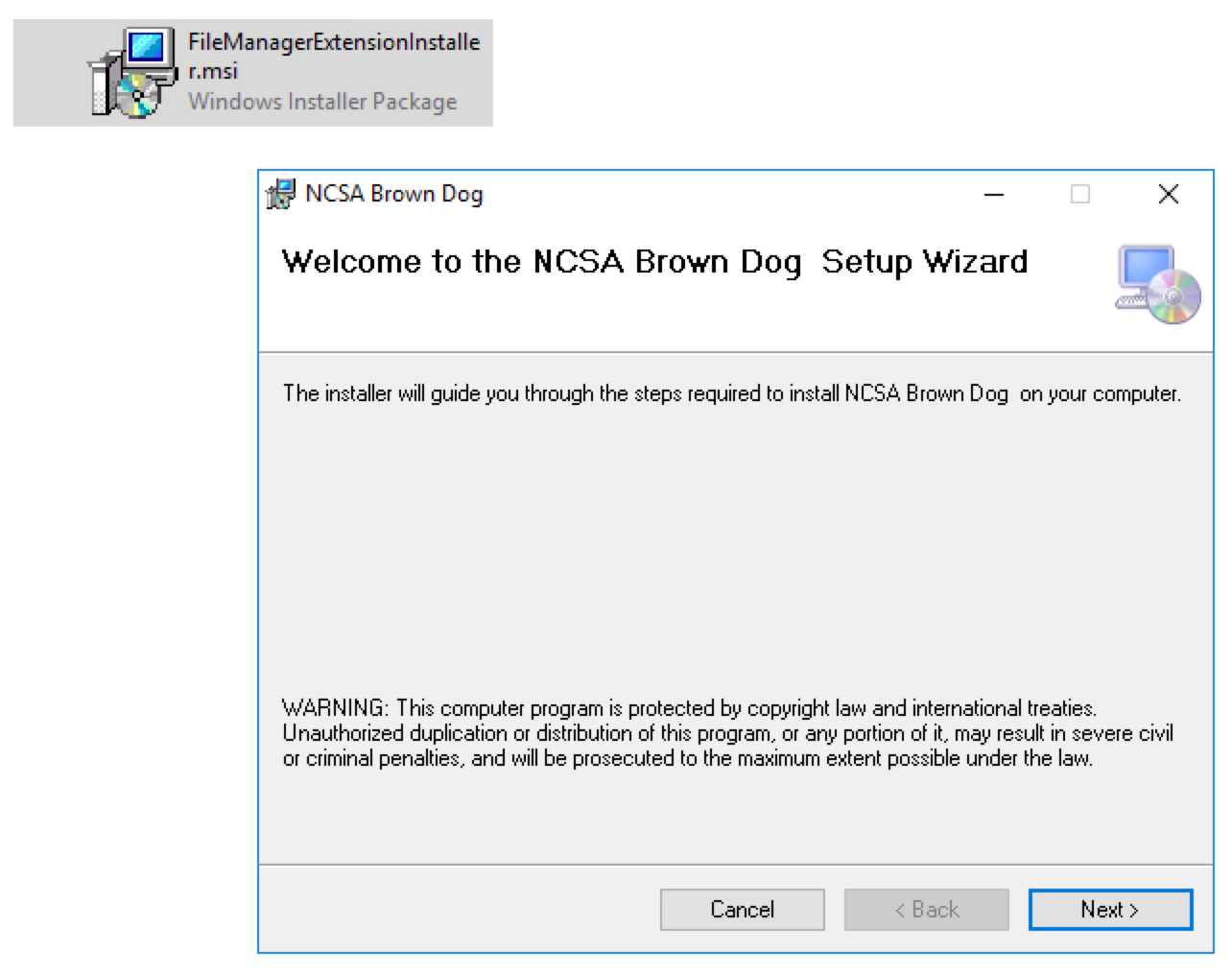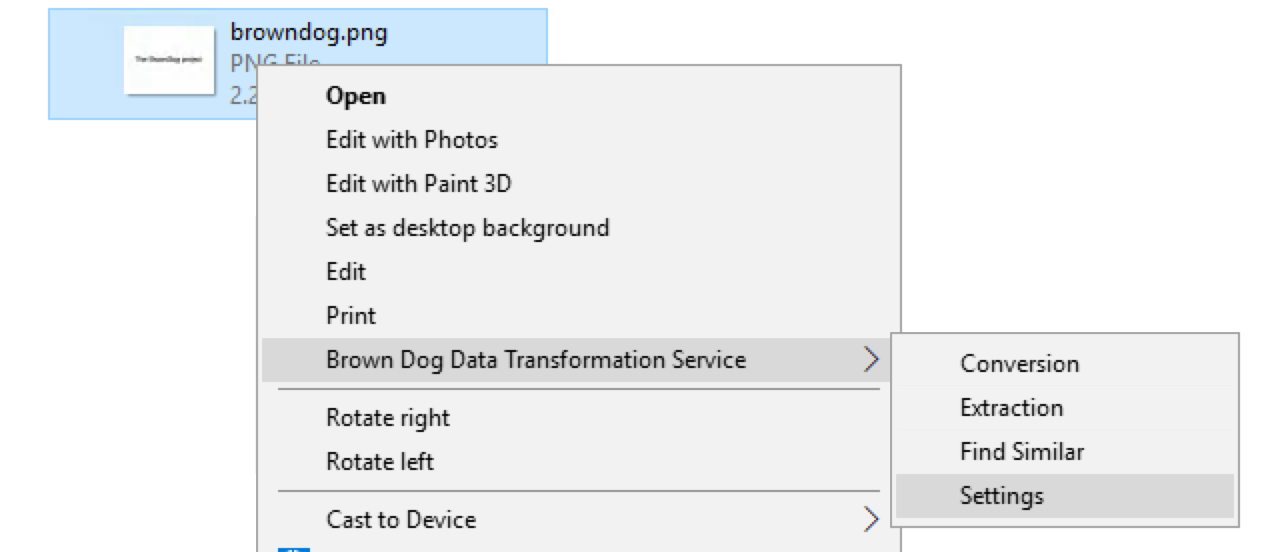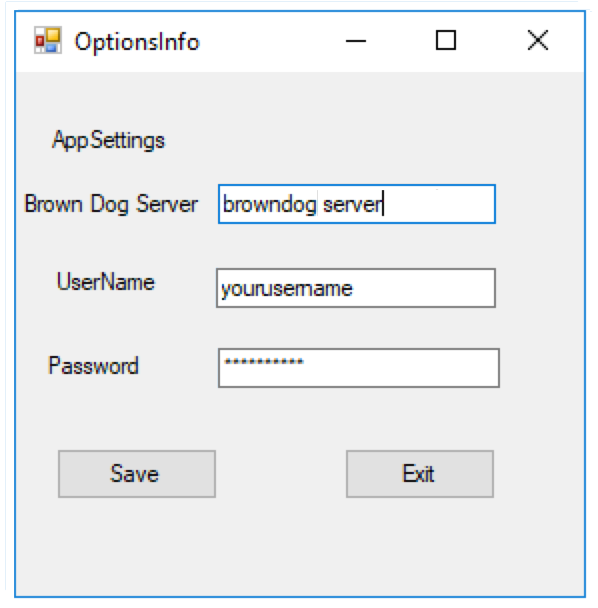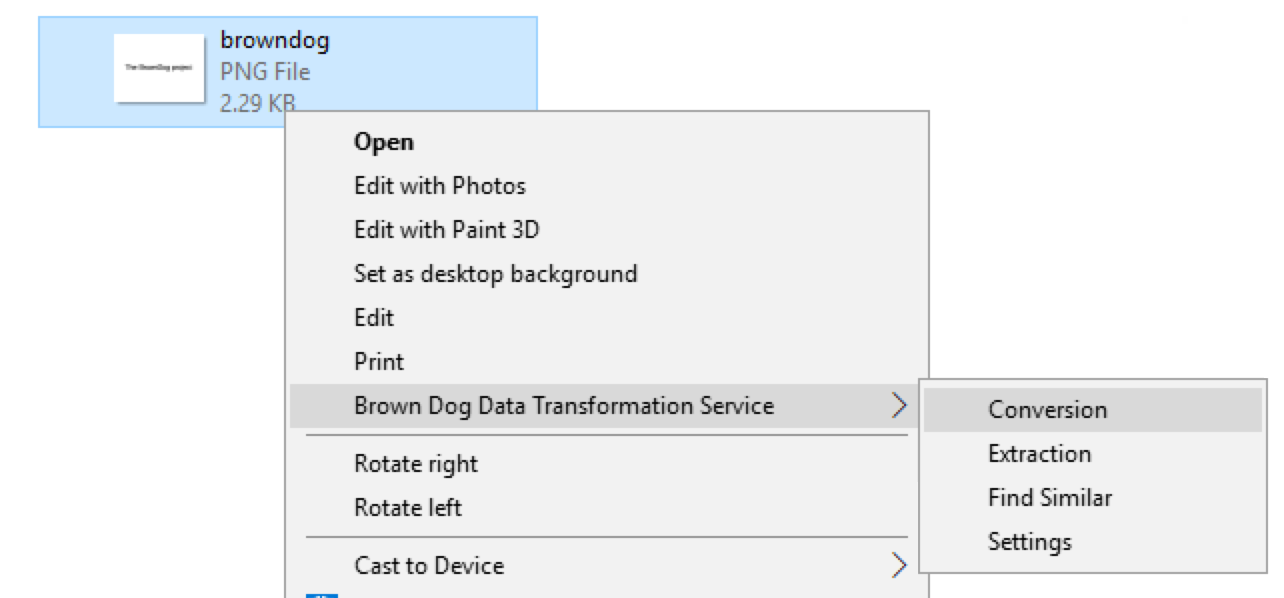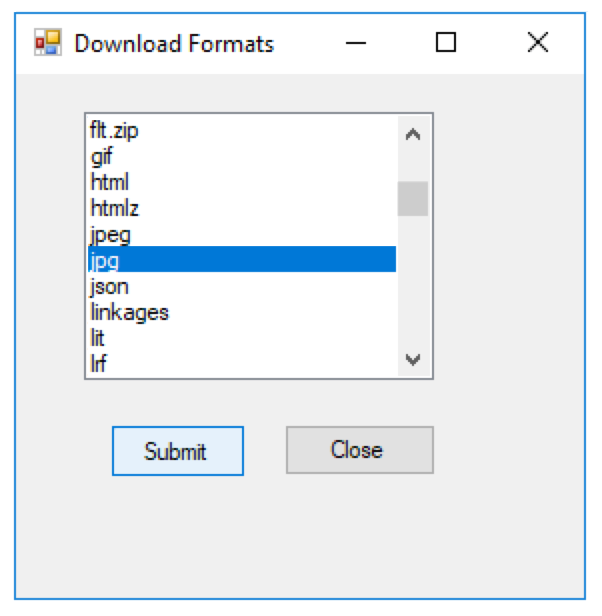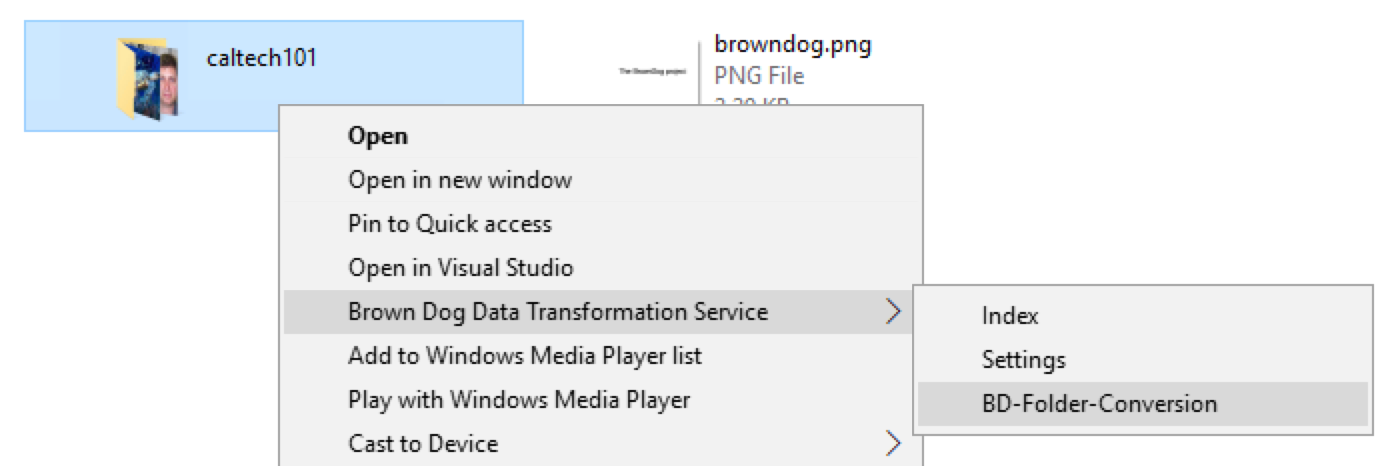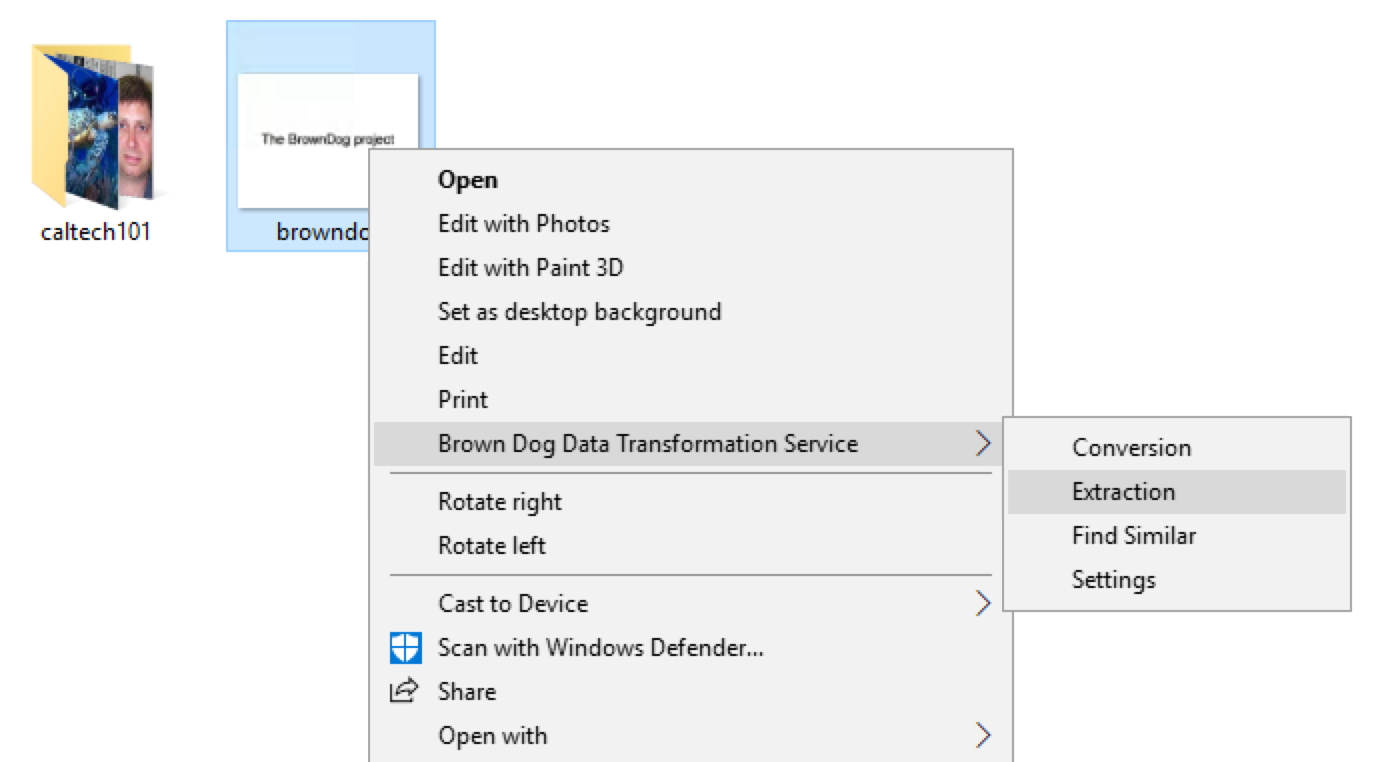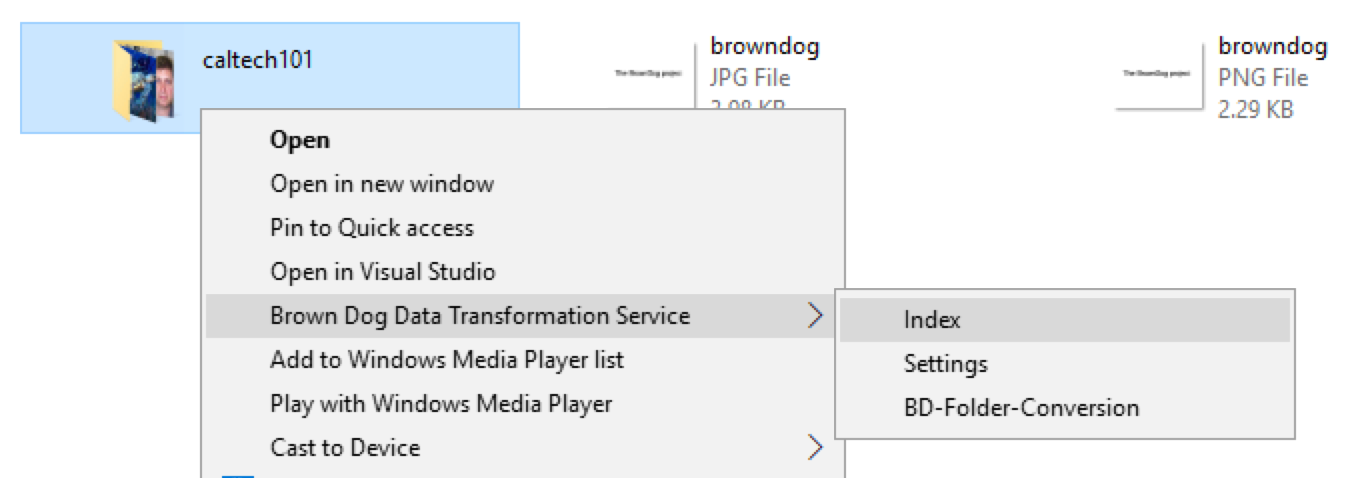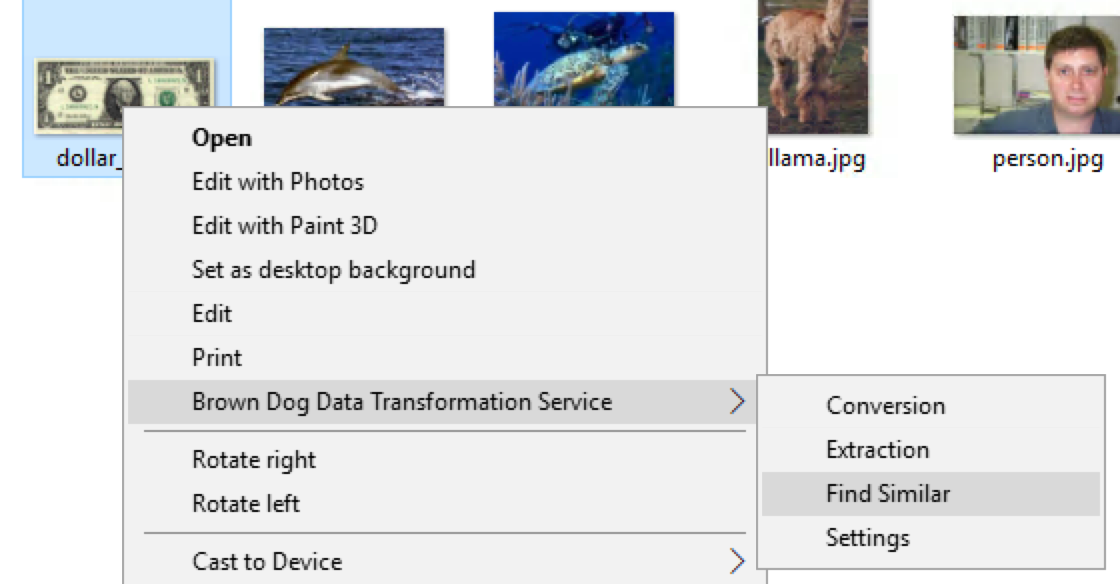The Brown Dog Windows client provides users with an easy to use graphical interface to Brown Dog services, performing conversions, extractions, and providing another level of search of files within folders based on extracted metadata. Below we describe how to use the Windows client.
Installation and Setup
Windows users can go to Brown Dog Clients to download BD windows Client Installer and install it on Windows (7, 10).
After installation you can setup the client to utilize a specific DTS instance by going to settings and setting the server along with your credentials for that server:
Conversions
To convert a file right click on a file and selected "Brown Dog → Conversion":
The Windows client will show the reachable output formats from the files current format. Select the desired output format and press "Submit":
Converting Entire Folders
Windows Client provides batch conversion on files. Users donot have to select each individual file and repeat executing conversion from GUI manually. Users convert the same format of files to a convertible format by ``One Click''.
Example figures show how to convert all .jpg files to .bmp files. A folder named ``caltech101'' contains multiple .jpg image files. User can right click this folder and select ``BD-Folder-Conversion'', then pick a convertible output format ``BMP'' to submit for conversion. A random name folder containing output files will be generated inside ``caltech101'' folder.
Extractions
User can execute extraction on a file by right clicking it and selecting ``Extraction'' from pop-up menu.
The extraction output file is json file, which is named as the file name. For example, in above figures, user runs extraction on file ``browndog.png'', and after completion, extraction output file will be written as ``browndog.json''in the same working directory.
Finding Similar Files
User can index image files in a target folder, and then pick an indexed image and right click ``Find Similar'' to extract the similarity result from all indexed images.
Above figures show how user can execute ``Find Similar'' among images under ``caltech101'' folder. First, user needs to do ``Index'' to index all images under ``caltech101'' folder (left figure), when indexing is done, a ``.index.tsv'' file will be generated under this folder. Then user can browser indexed images in ``caltech101'' folder and select an image and right click on it to execute ``Find Similar''. In this example, user selects an image file ``dollar_bill.jpg'' and the output file of ``dollar_billFind.json'' file will be generated under the same working directory.
